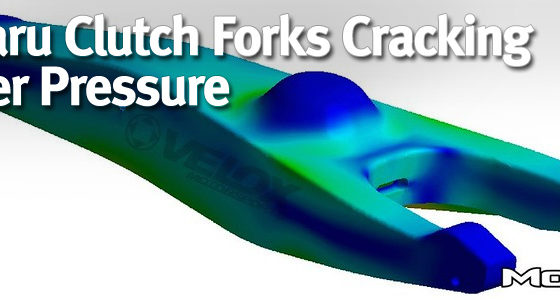,
 This is the “good stuff” — Raychem DR-25 heat shrink tubing.
This is the “good stuff” — Raychem DR-25 heat shrink tubing.In Part 7 where we introduced the wire we said that the milspec wiring had cut- and chemical-resistant insulation in addition to being self-extinguishing (fire). While that’s true, it’s just a part of the picture. Sure, you could run bundles of bare wires all over the place. Your project will quickly turn into a spaghetti mess, and, while I am a fan of the Flying Spaghetti Monster, I don’t want my car to look like an altar to it. Also, if you are pulling harness through holes, around bends, or etceteras, a bunch of bare wires is difficult to manage. Further, it’s easy to get other things caught on the loose wire after it is all installed. Heat shrink just makes everything better. And it looks so cool!
Raychem DR-25 heat shrink is the standard in motorsports harness design. This layer of heat shrink around your bundle provides extra environmental (chemical, temperature) resistance and helps to keep all your wires together and neat.
DR-25 is a relatively expensive name brand thing. There are other types of heat shrink out there with the desired qualities, but this is the stuff that MilSpecWiring sells and what the upper echelon of harness builders use. We didn’t skimp, here, either. Not skimping comes out to almost $1,000, by the way.
 Using a quality heat gun is important.
Using a quality heat gun is important.Tom is beginning to shrink the DR-25 over the largest bundle in the trunk loom. If you look back to the schematic, you can see that the bundle coming out of the 12-pin DT connector splits into several smaller bundles. You will have to spend some time during construction to plan how you will get heat shrink over the various sections of your loom. The worst feeling is when you get something twisted and laced and then realize that you can’t get heat shrink over it.
The Arcadia design suite calculates wiring bundle diameter and can provide a suggestion for what size heat shrink tube to place over a bundle. This helps a lot in ordering. Unfortunately for us, we ended up erring on the large side and ended up with too much big stuff and not enough small stuff- our only real complaint.
For really long runs of wire, it can be difficult to get it to go “through” the heat shrink. The wire is flexible. The shrink is flexible. The shrink is smooth inside but not friction-free. There are tricks you can employ to help but, ultimately, it’s just something you kind of have to figure out. Don’t worry, you’ll get it.
Also note that you need a good quality heat gun to evenly and carefully heat the tubing so that it shrinks. A hair dryer will not work. Using something with open flame is not advised. It is possible to over-heat the shrink tube, so go slowly.
Raychem produces a chart that shows the minimum “recovered” size of the tube after shrinking. Ideally you want to start with the smallest diameter tube that will fit over your work so that the tube will try to shrink tightly over the loom. You should not be able to easily pull the shrink off the loom after heating it. If you can, it means you started with shrink tube that was too big.
 What do you do where harness bundles split?
What do you do where harness bundles split?Another benefit of sealing up harnesses with DR-25 is environmental protection. If you combine the DR-25 with boots on sealed connectors, the entirety of the loom can be made to be fluid tight / environmentally sealed. But, here we have a junction where bundles split out. How can we keep this environmentally sealed? Using yet another type of shrink tube called glueline.
Raychem makes several types of glue-lined heat shrink tubing. In the case of this junction, we are using ATUM. This is a 4:1 ratio heat shrink tube filled with glue that will form an environmental seal once it shrinks and melts onto a surface.
 Shrinking ATUM glueline over a harness junction.
Shrinking ATUM glueline over a harness junction.We apply a short piece of ATUM to this junction and then start to shrink it, on the non-split side first.



